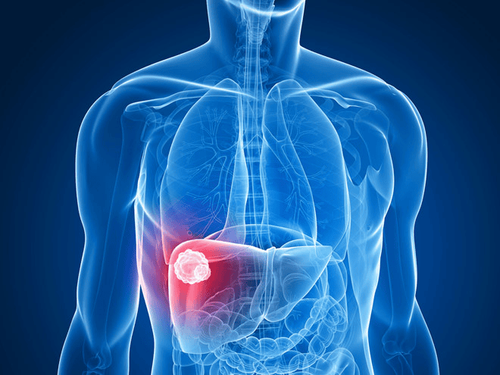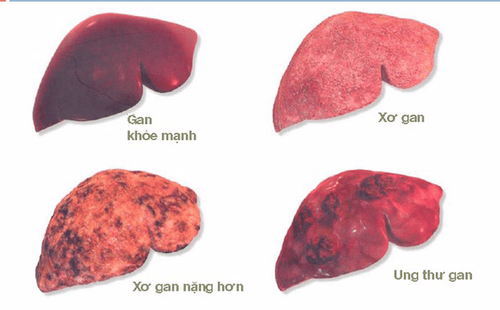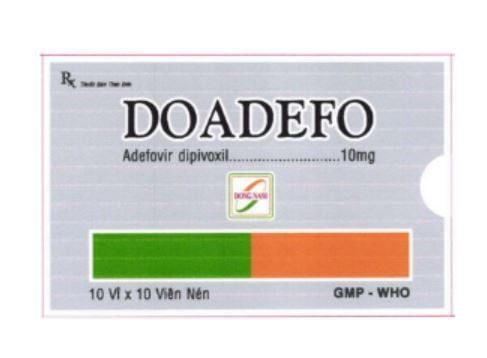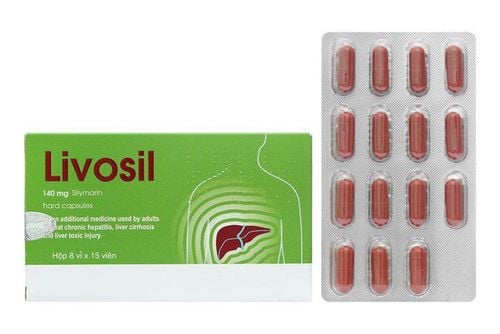This is an automatically translated article.
Childhood hepatoblastoma is a very rare type of cancer that occurs in the liver. This disease usually begins in children under 3 to 4 years of age. The disease has similar symptoms to many other liver diseases, so when detected, the disease has progressed to a serious stage.
1. What is hepatoblastoma in children?
Childhood hepatoblastoma is a rare tumor that originates in cells in the liver. This is a malignant liver tumor that usually occurs in young children and most tumors start in the right lobe of the liver. Hepatocellular carcinoma can also metastasize to other areas of the body, with the most common site of metastasis being the lungs.
Hepatoblastoma is most common from infancy to about 5 years old. Most cases appear in the first 18 months of life. Hepatoblastoma is more common in white children than black children and occurs more often in boys than in girls under 5 years of age, after this age there is no sex difference in the incidence of hepatoblastoma. In addition, hepatoblastoma is also common in low birth weight premature babies.
Although the cause of hepatoblastoma in children is unknown, there are a number of genetic conditions that are associated with an increased risk of developing hepatoblastoma in children, including:
The syndrome Beckwith-Wiedemann. The syndrome is characterized by a combination of various pathologies such as Wilms tumor, renal failure, genital anomalies, and gonadal (ovarian or testicular) abnormalities. Familial adenomatous polyposis. This is a group of rare genetic diseases of the gastrointestinal tract. Hemihypertrophy is a condition in which one side or part of a child's body grows faster than the other. Children who were exposed to hepatitis B at an early age or born with biliary atresia are also at increased risk for liver cancer.

Bệnh u nguyên bào gan có thể gặp ở trẻ sinh non nhẹ cân
2. Symptoms of hepatoblastoma in children
Symptoms of hepatoblastoma in children depend on the size of the tumor and whether it has spread, so symptoms can vary from child to child. Typical symptoms include:
Having a tumor in the abdomen Enlarged abdomen Abdominal pain Loss of appetite Loss of weight Feeling tired Nausea and vomiting Yellowing of the skin and eyes Fever Itchy skin On the abdomen swollen veins Symptoms of the tumor Hepatoblastoma can resemble other diseases, so if a child has the above symptoms, parents should take the child to a reputable medical facility.

Trẻ xuất hiện đau bụng, vàng da
3. Diagnosis of hepatoblastoma in children
Parents may bring their child to the doctor because the child has a tumor in the abdomen, the abdomen is swollen, or the child has pain in the abdomen or other symptoms. The doctor will ask the child and parents the current symptoms and examine the abdomen. If a tumor is suspected, the doctor will refer the child to a doctor who specializes in the diagnosis and treatment of childhood cancer to perform more specialized diagnostic techniques such as:
Blood tests: These tests look for signs of disease such as blood clotting problems, liver and kidney function, signs of tumors, genetic problems... Ultrasound: This technique uses sound waves to create images of the liver and abdominal organs. CT scan: This technique uses X-rays and a computer to create images of the organs in the body and examine the blood vessels in the liver. MRI scan: This technique uses large magnets, radio waves, and a computer to create detailed pictures of the inside of the body as well as look at the blood vessels in the liver. Biopsy: A biopsy can be done with a needle or surgery to remove a piece of the tumor and examine it with a microscope for cancer cells. This is the technique that should be performed to diagnose hepatoblastoma.
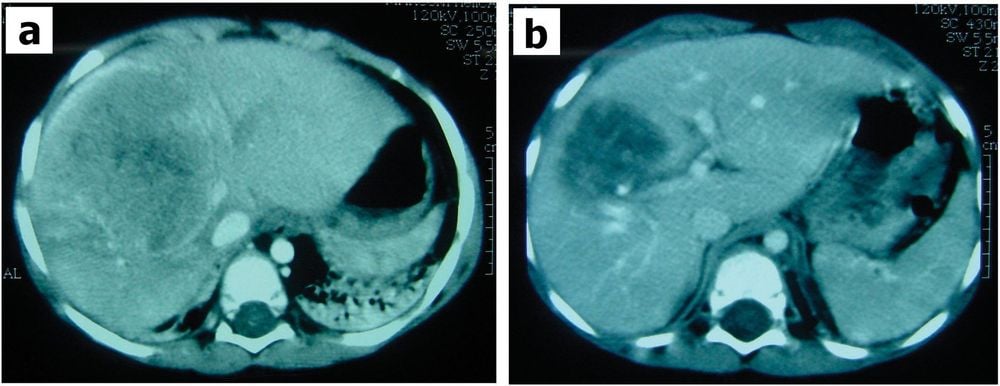
Hình ảnh kết quả chụp CT u nguyên bào gan ở trẻ em
After being diagnosed with hepatoblastoma, your child may need additional tests to help the doctor learn more about the child's cancer, such as the stage of the cancer and how far it has been. metastasis in the child's body. The children will then be divided into two groups:
PRETEXT group describing the tumor before starting treatment POSTTEXT group describing the tumor after treatment Both groups have additional numbers 1 to 4 written as numbers Romans I, II, III and IV. A higher number means that there are more lobes of the liver with cancer cells and the more advanced the cancer.
Grouping is important for making cancer treatment decisions. If you do not understand the above characters, parents should consult a doctor for a thorough and clear explanation.
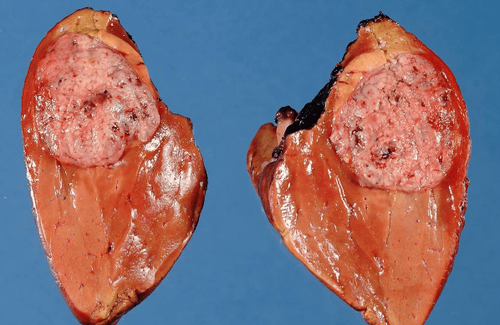
Hình ảnh khối u nguyên bào gan
4. Treatment of hepatoblastoma in children
Treatment for hepatoblastoma in a child will depend on the stage of the cancer and several other factors. Cancer can be treated with the following measures:
Surgery to remove as much of the tumor as possible. Surgery may also be done to remove tumors in other parts of the body, such as tumors in the lungs. Chemotherapy: This treatment uses drugs that kill cancer cells and is given before or after surgery. These drugs are given as an intravenous infusion or by injection or by mouth. Chemotherapy drugs may also be delivered directly to the liver by a catheter into the liver's main artery. The drug is mixed with a substance that blocks blood flow to the tumor, causing the tumor to slow down. Liver transplant: If the tumor cannot be removed, the doctor may remove the child's liver and replace it with a donor liver. Radiation therapy: This is a treatment that uses high-energy X-rays or other types of radiation to kill cancer cells or stop them from growing. Supportive care: During the treatment, the child will experience some side effects from the medicine, so the child will need additional supportive treatment such as medicine and other treatments to relieve pain, fever, infection and sadness. vomiting, vomiting.

Cha mẹ nên đưa trẻ đến gặp bác sĩ để được điều trị kịp thời
The effectiveness of treatment for hepatoblastoma in children depends a lot on whether the disease is detected early or not. There are many methods to detect hepatoblastoma of which screening is the most accurate.
Currently, Vinmec International General Hospital has Hepatobiliary Screening packages, helping to detect liver diseases at the earliest, even when the disease has no symptoms. Hepatobiliary screening package is very diverse, to suit your needs:
Hepatobiliary screening package - comprehensive Package of hepatobiliary screening test - advanced Hepatobiliary screening package - standard To register for examination and For treatment of hepatobiliary diseases at Vinmec International General Hospital, you can contact the Vinmec Health System hotline nationwide, or register for an online examination HERE.
References: stanfordchildrens.org
MORE:
Treatments for liver cancer Liver cancer classification and stages Hepatoblastoma: What you need to know





